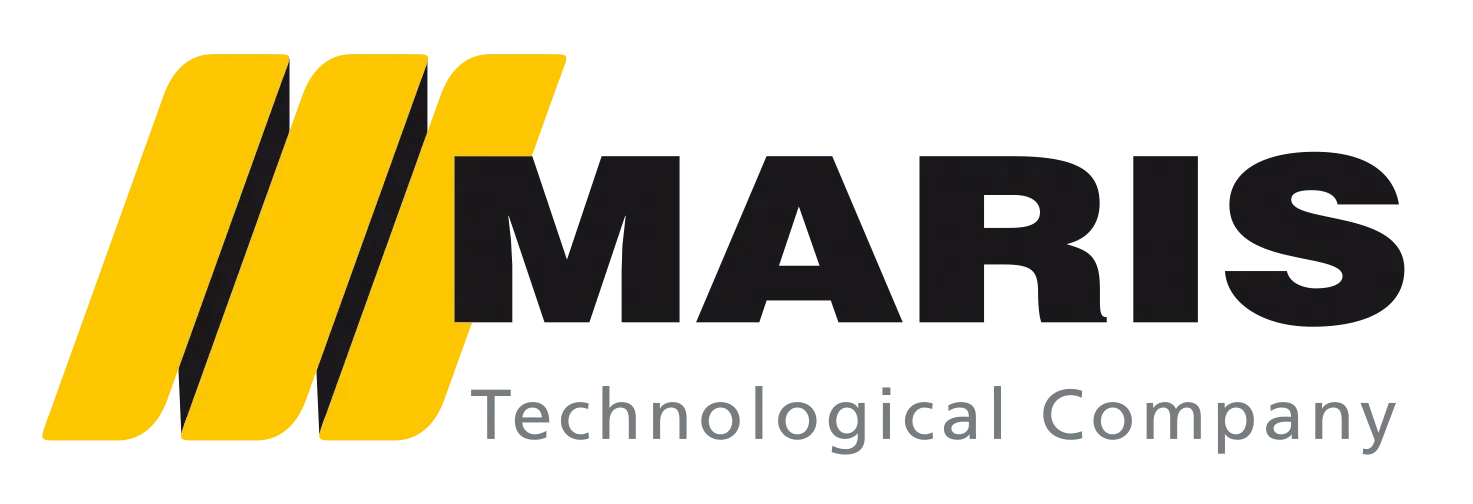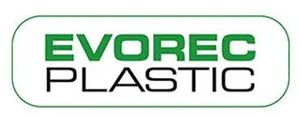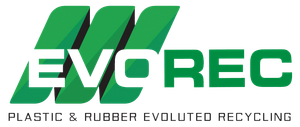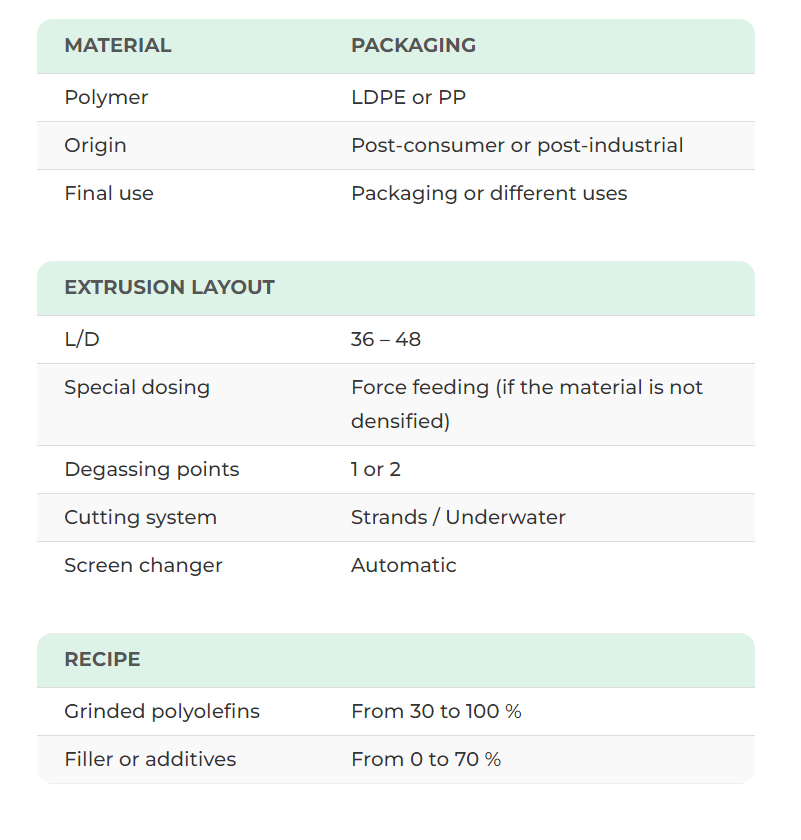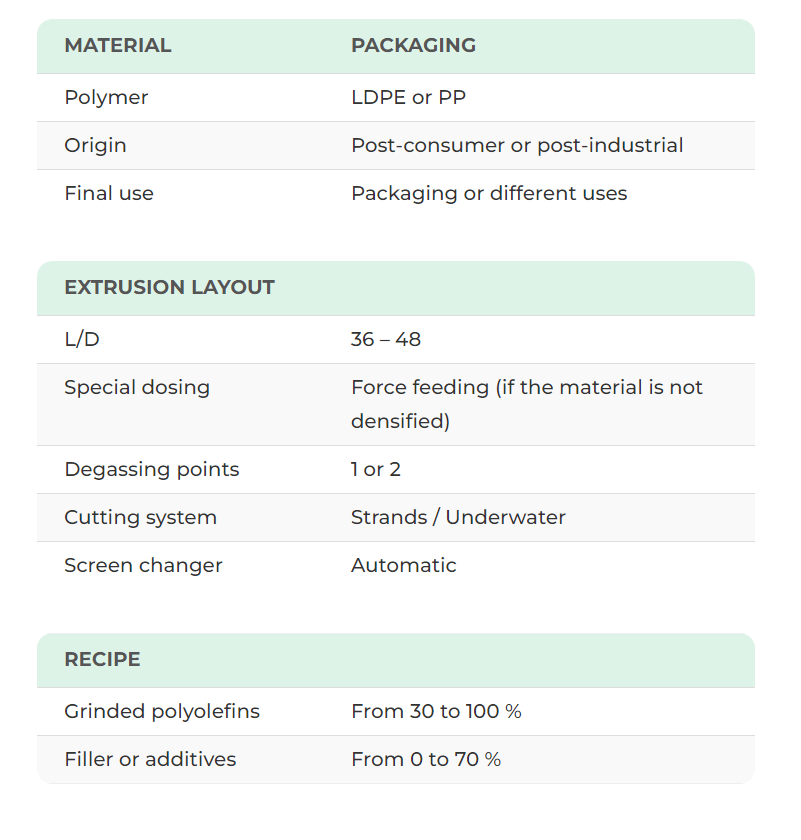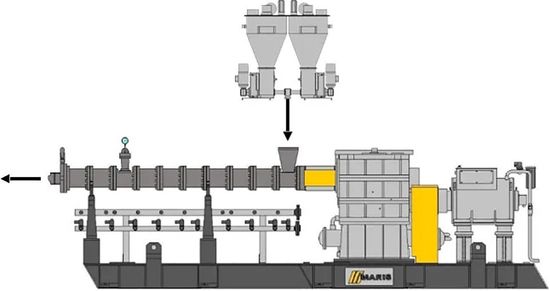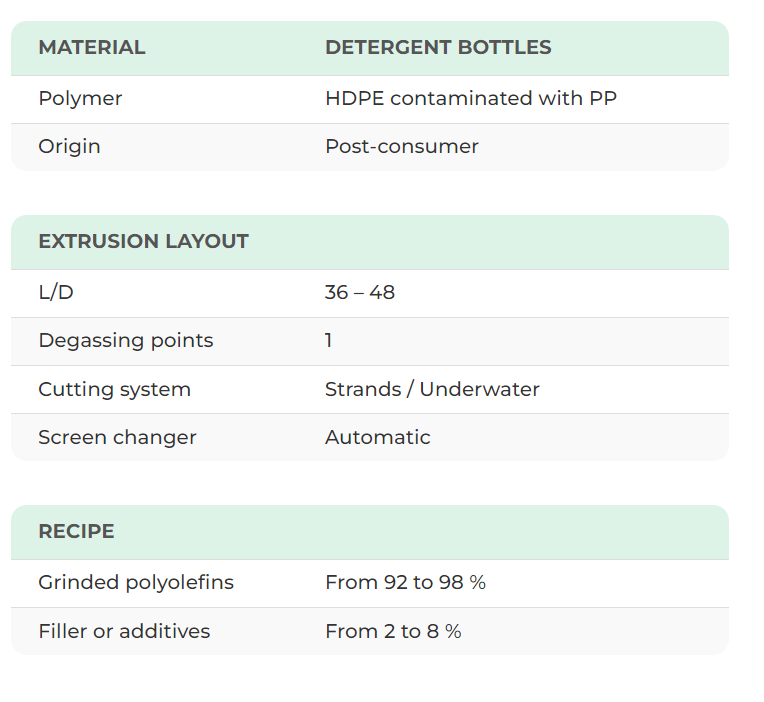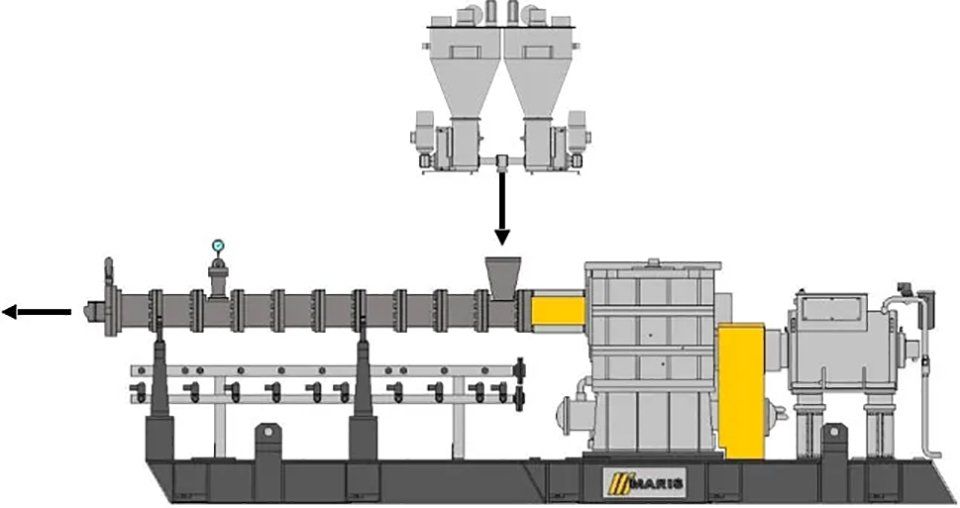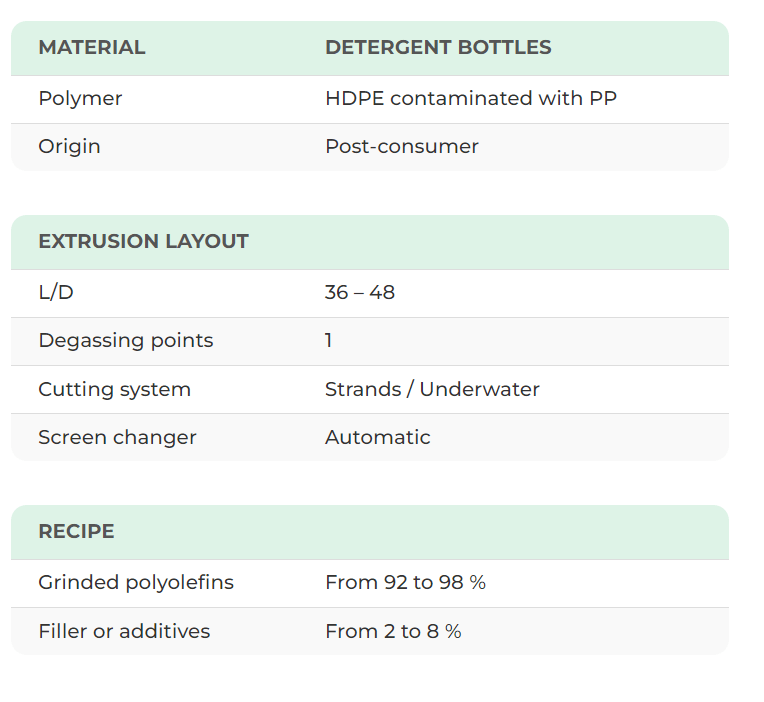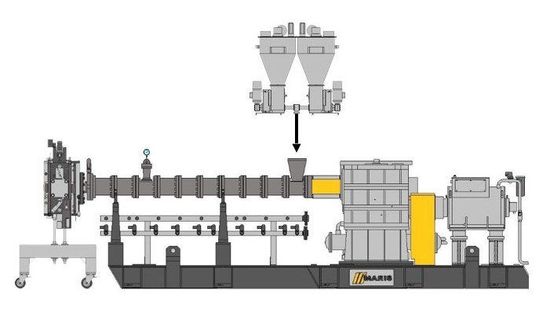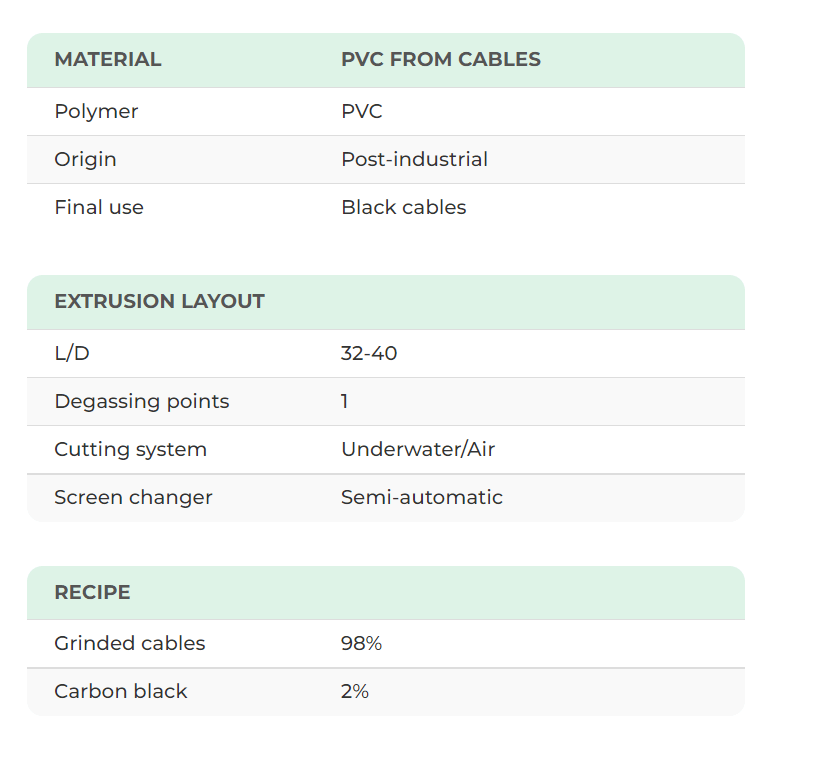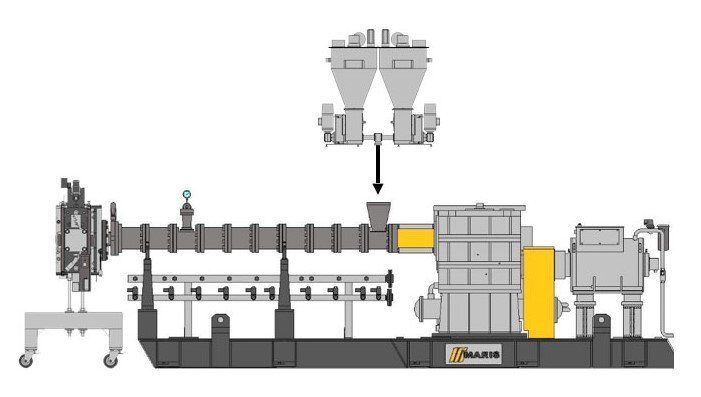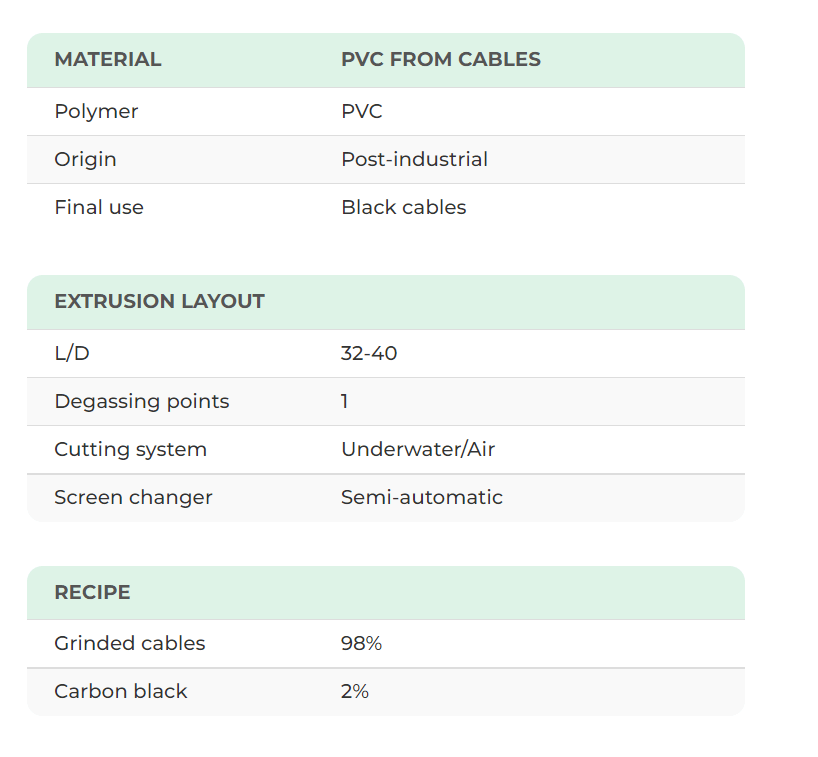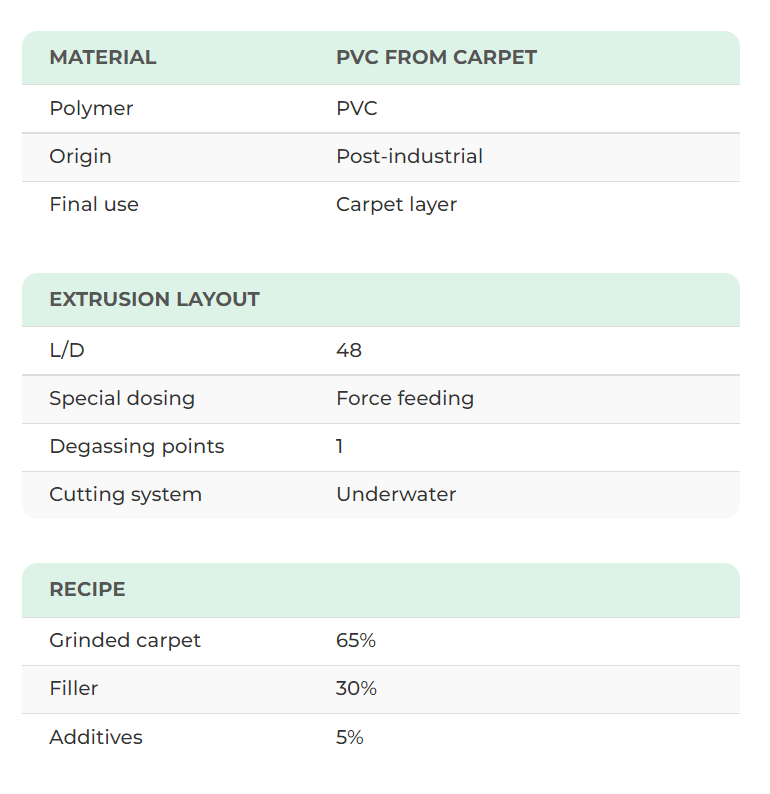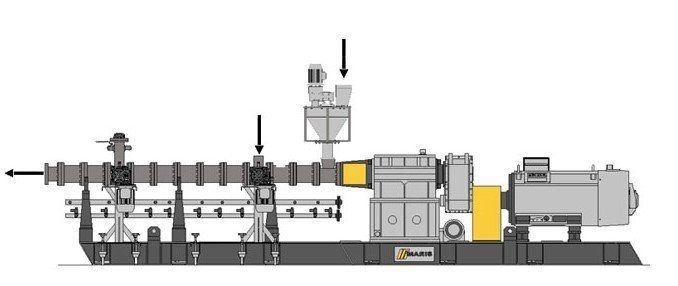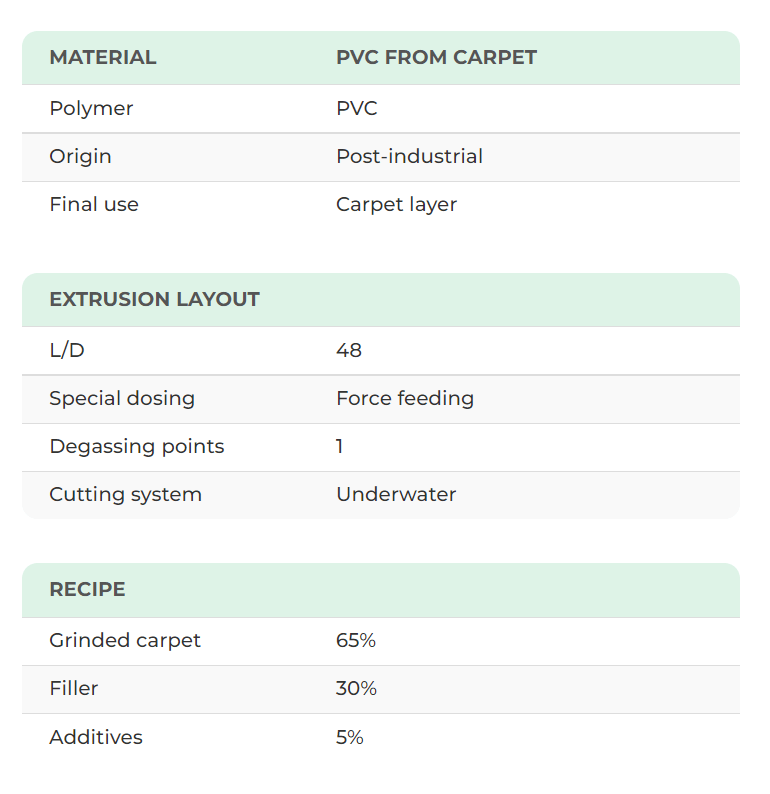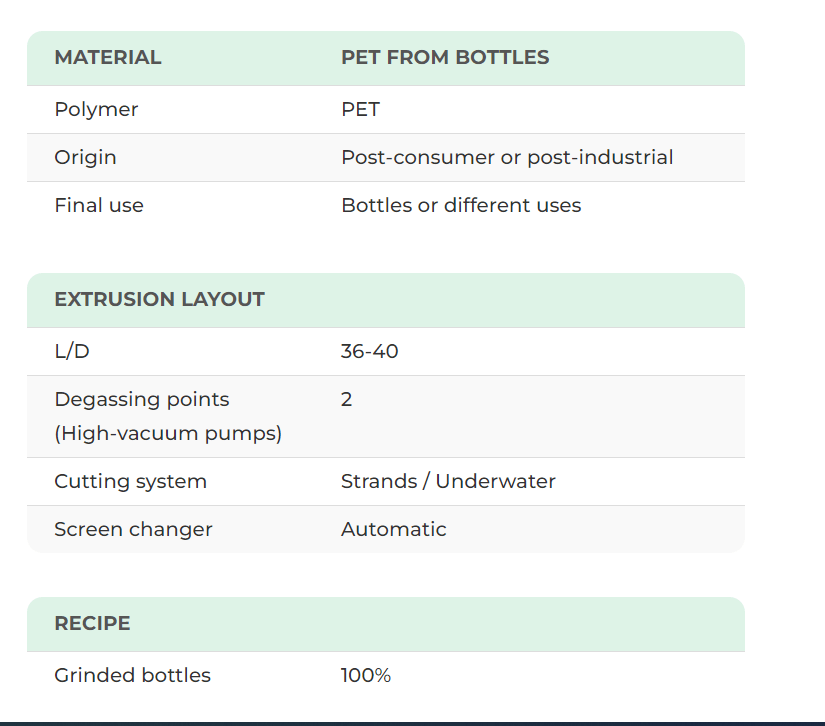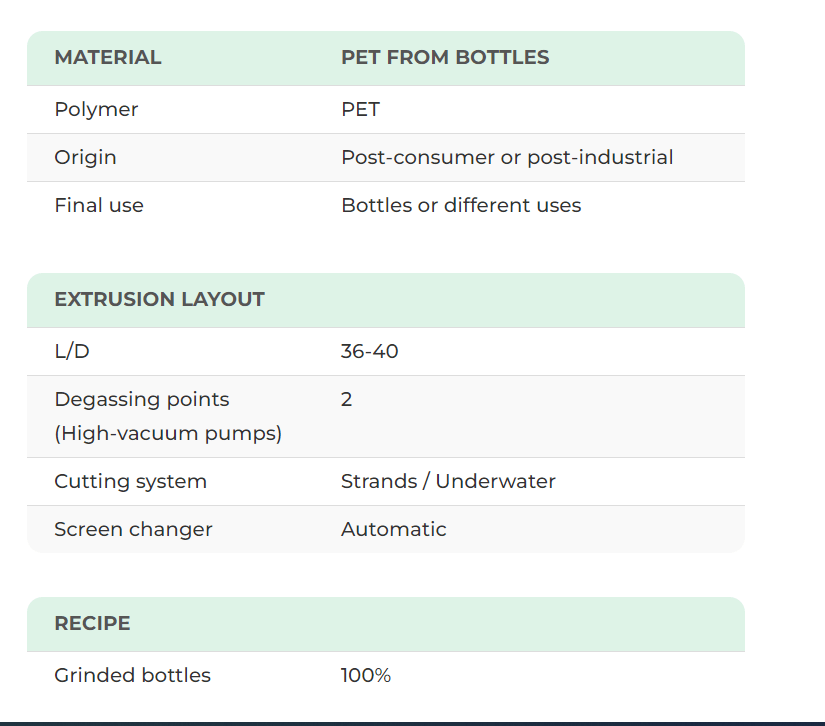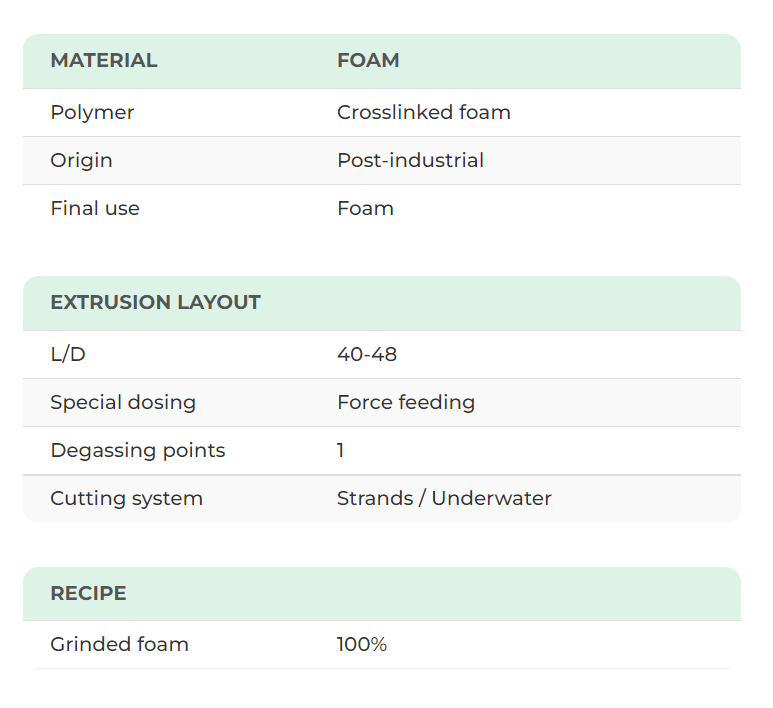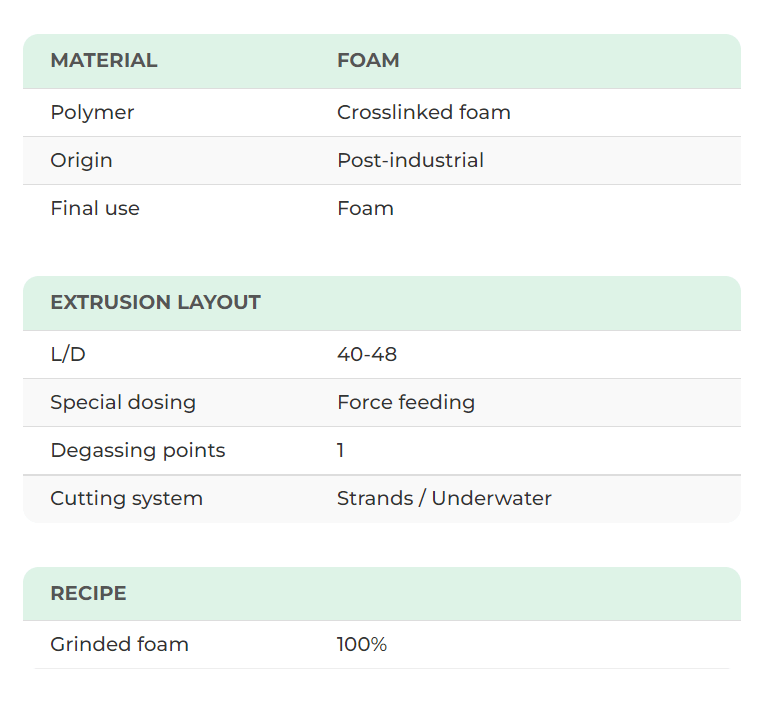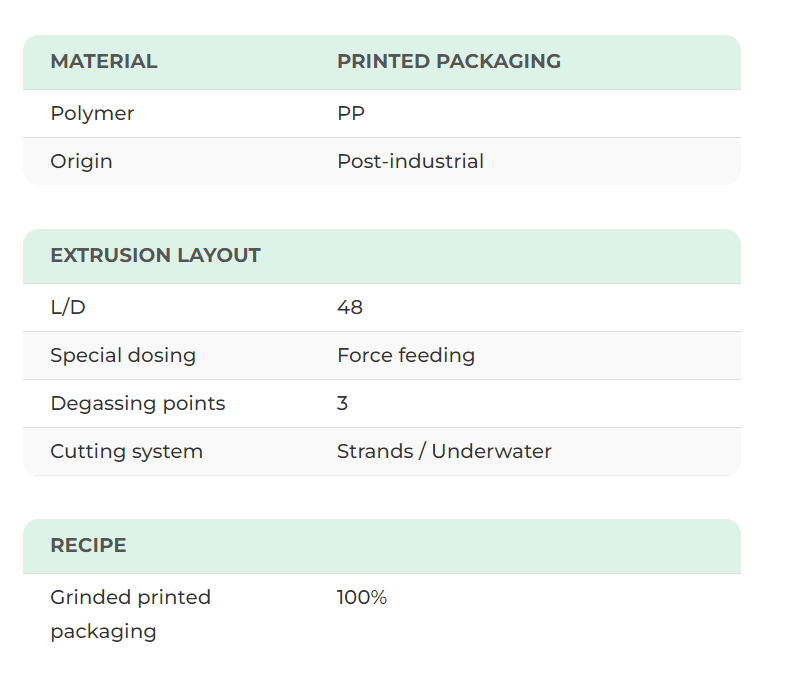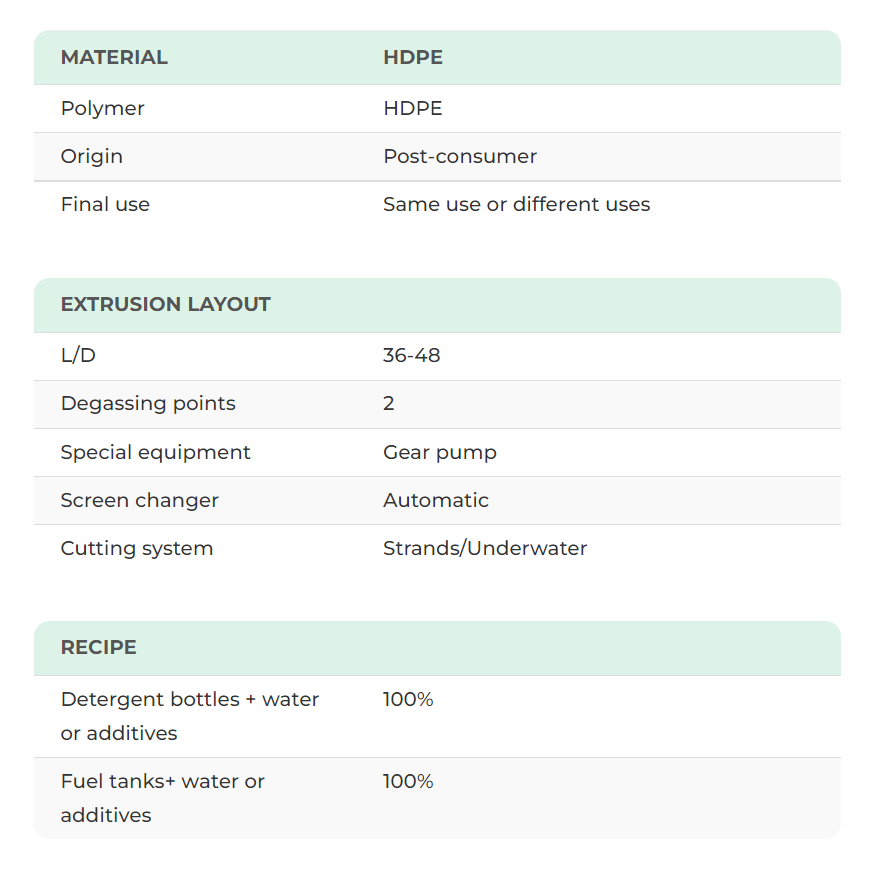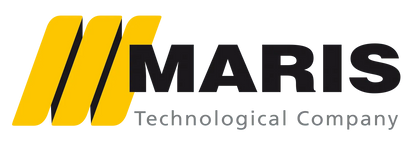WORKING FOR A
BETTER WORLD
Towards a circular economy
EVOLUTED RECYCLING
solutions for plastic and rubber
At a time when the recovery of plastic materials plays a key role in the Circular Economy, we have studied and designed specific extruders to achieve this goal.
The intrinsic characteristics of co-rotating twin-screw extruders can ensure not only excellent homogeneity, degassing and filtration levels of the processed material, but also offer the possibility of adding fillers and/or additives.
Thanks to the optimization of this process, the materials produced with our extruders can improve their mechanical and aesthetic performances turning waste and scrapes into compounds required by the market.
Processed plastic materials may be both highly selected and low in contaminants (post-industrial) as well as partially selected with a high content in contaminants (post-consumption).
POLYOLEFINS Recycling
Two-thirds of plastic waste comes from packaging.
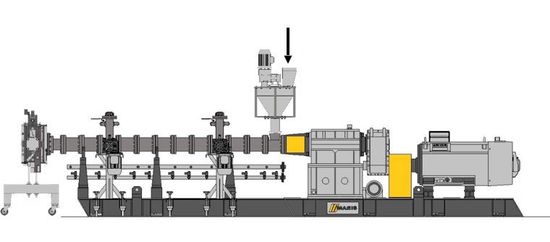
Slide title
Scrivi qui la tua didascaliaButton
Thanks to Maris co-rotating twin-screw extruders, LDPE or PP base packaging can be recycled to produce films again.
Furthermore, by equipping the extruder with one or more side-feeders, it is possible to add mineral fillers/additives to improve the material properties. In case the material is of post-consumer origin, the extruder is equipped with an automatic screen-changer to eliminate the contaminations.
Two-thirds of plastic waste comes from packaging.
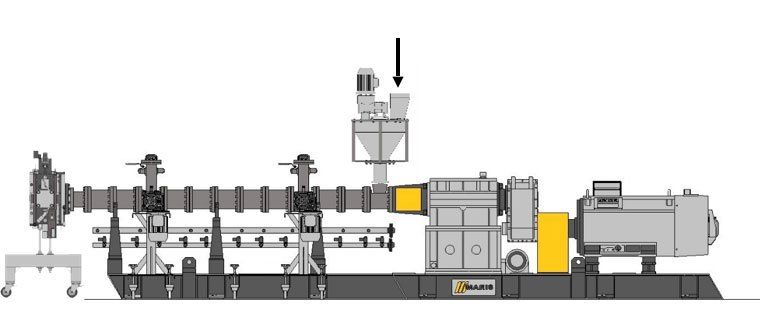
Slide title
Scrivi qui la tua didascaliaButton
Thanks to Maris co-rotating twin-screw extruders, LDPE or PP base packaging can be recycled to produce films again.
Furthermore, by equipping the extruder with one or more side-feeders, it is possible to add mineral fillers/additives to improve the material properties. In case the material is of post-consumer origin, the extruder is equipped with an automatic screen-changer to eliminate the contaminations.
PP-contaminated HDPE?
No problem!
Very often the placing on the market of recycled HDPE is made more difficult by the contamination of PP.
Thanks to Maris co-rotating twin-screw extruders, it is possible to overcome this problem by processing and adding, in different percentages depending on the level of contamination, a polymeric compatibilizer that significantly improve the mechanical performance of the material.
Very often the placing on the market of recycled HDPE is made more difficult by the contamination of PP.
Thanks to Maris co-rotating twin-screw extruders, it is possible to overcome this problem by processing and adding, in different percentages depending on the level of contamination, a polymeric compatibilizer that significantly improve the mechanical performance of the material.
PVC Recycling
Cables to…cables!
Thanks to Maris co-rotating twin-screw extruders, the processing scraps of PVC cable sheaths, can be recovered, recycled and reintroduced into the production cycle.
To grant a material free from contaminants (wood, metals, etc.) our extruders are generally equipped with (semi) -automatic screen-changer. It is also possible to add mineral fillers / additives to improve the properties of the material or carbon black to change its color.
Cables to…cables!
Thanks to Maris co-rotating twin-screw extruders, the processing scraps of PVC cable sheaths, can be recovered, recycled and reintroduced into the production cycle.
To grant a material free from contaminants (wood, metals, etc.) our extruders are generally equipped with (semi) -automatic screen-changer. It is also possible to add mineral fillers / additives to improve the properties of the material or carbon black to change its color.
Carpet to…carpet!
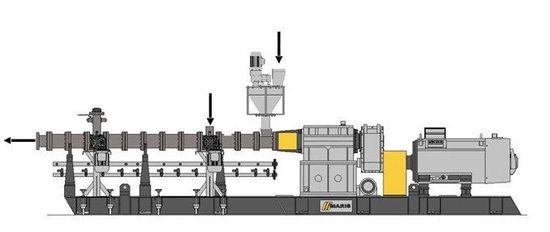
Slide title
Scrivi qui la tua didascaliaButton
Thanks to Maris co-rotating twin-screw extruders, it is possible to recover PVC / fitted carpet processing wastes, recycling and reintroducing them into the production cycle.
By equipping the extruder with one or more side feeders, it is also possible to add mineral fillers / additives to improve the properties of the material and use it to produce a carpet layer.
Thanks to Maris co-rotating twin-screw extruders, it is possible to recover PVC / fitted carpet processing wastes, recycling and reintroducing them into the production cycle.
By equipping the extruder with one or more side feeders, it is also possible to add mineral fillers / additives to improve the properties of the material and use it to produce a carpet layer.
PET Recycling
Bottles to…bottles!

Slide title
Scrivi qui la tua didascaliaButton
Thanks to Maris co-rotating twin-screw extruders, PET bottles can be recycled to produce 100%-green new ones.
In order to preserve the mechanical properties of the material, our extruders are equipped with special high-vacuum pumps able to degas the material in two points and impeding the moisture to degrade the PET polymeric chains.
By equipping the extruder with one or more side feeders, it is also possible to add mineral fillers to improve the material properties and use it in different applications.
Bottles to…bottles!
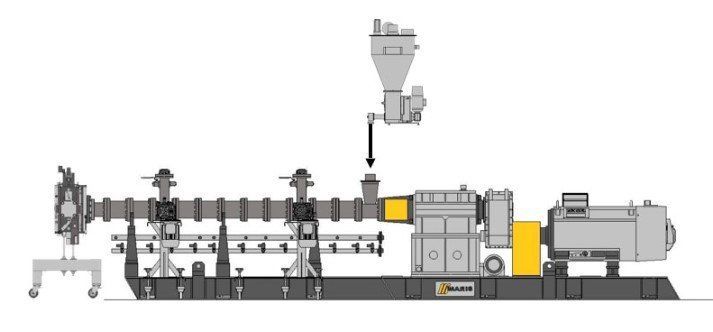
Slide title
Scrivi qui la tua didascaliaButton
Thanks to Maris co-rotating twin-screw extruders, PET bottles can be recycled to produce 100%-green new ones.
In order to preserve the mechanical properties of the material, our extruders are equipped with special high-vacuum pumps able to degas the material in two points and impeding the moisture to degrade the PET polymeric chains.
By equipping the extruder with one or more side feeders, it is also possible to add mineral fillers to improve the material properties and use it in different applications.
Crosslinked foam
Recycling of crosslinked foams is possible!
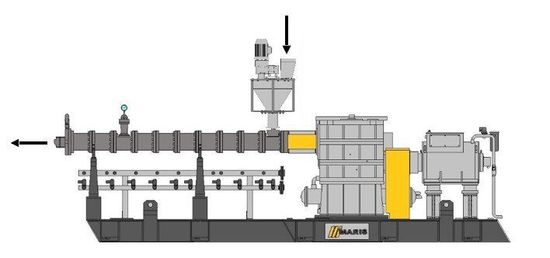
Slide title
Scrivi qui la tua didascaliaButton
The Maris Technological Center has recently designed and tested a new process for the recycling of post-industrial crosslinked foam, in order to recover processing waste and reuse it in the same production cycle.
In order to convert the material back into a plastic polymer, it is necessary to break the crosslinks between chains as selectively as possible, taking care not to degrade the polymer.
The physical characteristics and the very low bulk density of this material make it necessary to use a forced feeder to facilitate the introduction of the material inside the extruder.
Recycling of crosslinked foams is possible!
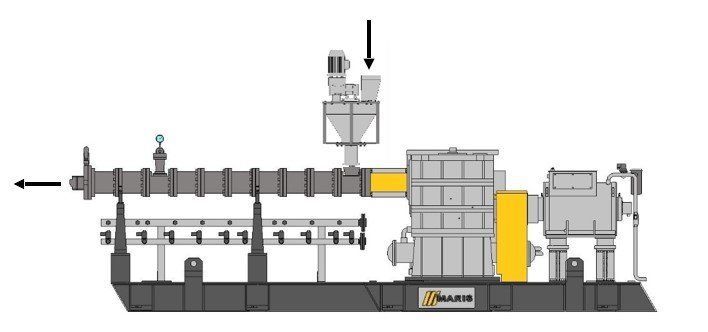
Slide title
Scrivi qui la tua didascaliaButton
The Maris Technological Center has recently designed and tested a new process for the recycling of post-industrial crosslinked foam, in order to recover processing waste and reuse it in the same production cycle.
In order to convert the material back into a plastic polymer, it is necessary to break the crosslinks between chains as selectively as possible, taking care not to degrade the polymer.
The physical characteristics and the very low bulk density of this material make it necessary to use a forced feeder to facilitate the introduction of the material inside the extruder.
Ink reduction
Ink reduction
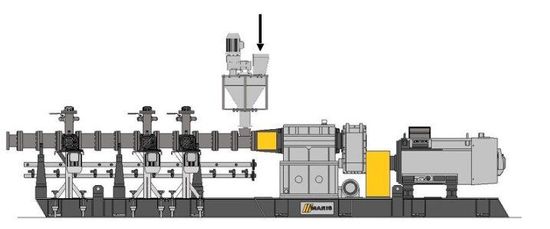
Slide title
Scrivi qui la tua didascaliaButton
Maris Technological Center has recently designed and tested a new process for removing ink printed on packaging.
In order to extract high percentages of ink it is necessary to equip the extruder with three different degassing points and adopt a dedicated machine configuration for this particular process.
Thanks to this innovative process, it is possible to obtain a compact material, without porosity and with a low odor level.
Ink reduction
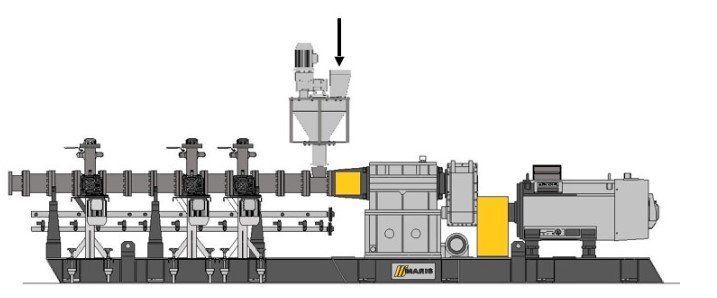
Slide title
Scrivi qui la tua didascaliaButton
Maris Technological Center has recently designed and tested a new process for removing ink printed on packaging.
In order to extract high percentages of ink it is necessary to equip the extruder with three different degassing points and adopt a dedicated machine configuration for this particular process.
Thanks to this innovative process, it is possible to obtain a compact material, without porosity and with a low odor level.
Odors reduction
Odors reduction
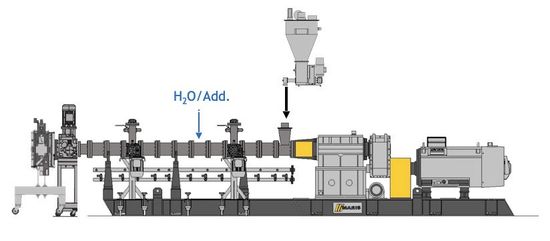
Slide title
Scrivi qui la tua didascaliaButton
The Maris Technological Center has recently designed and tested a new process for the reduction of odors within polymers having post-consumer origins.
The materials that can be processed can be the most varied; the table shows two examples of HDPE coming from bottles for detergents and tanks for fuel. In order to extract effectively the odor contribution, it is necessary to equip the extruder with two different degassing points.
Besides the addition of particular additives for odor reduction, Maris has devised a special stripping system, thanks to the injection of water along the odor-reduction process.
Thanks to this innovative process it is possible to obtain a material with odor values of a few ppm and therefore to be able to give a new life to these materials.
Odors reduction
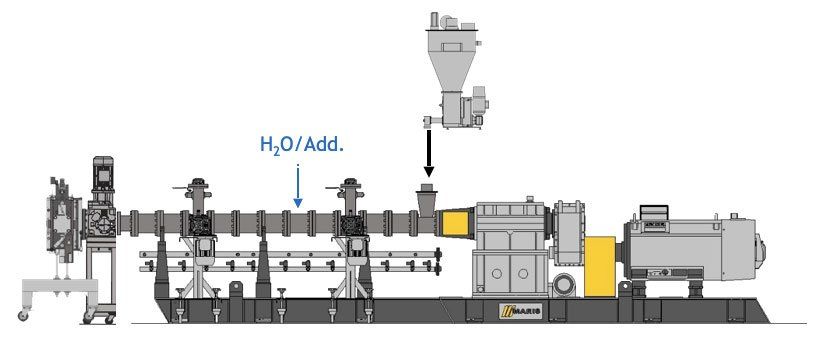
Slide title
Scrivi qui la tua didascaliaButton
The Maris Technological Center has recently designed and tested a new process for the reduction of odors within polymers having post-consumer origins.
The materials that can be processed can be the most varied; the table shows two examples of HDPE coming from bottles for detergents and tanks for fuel. In order to extract effectively the odor contribution, it is necessary to equip the extruder with two different degassing points.
Besides the addition of particular additives for odor reduction, Maris has devised a special stripping system, thanks to the injection of water along the odor-reduction process.
Thanks to this innovative process it is possible to obtain a material with odor values of a few ppm and therefore to be able to give a new life to these materials.
F.lli Maris S.p.A.
Corso Moncenisio, 22
10090 Rosta (TURIN) - Italy
TEL: +39 011 956 7925
FAX: +39 011 956 7987
